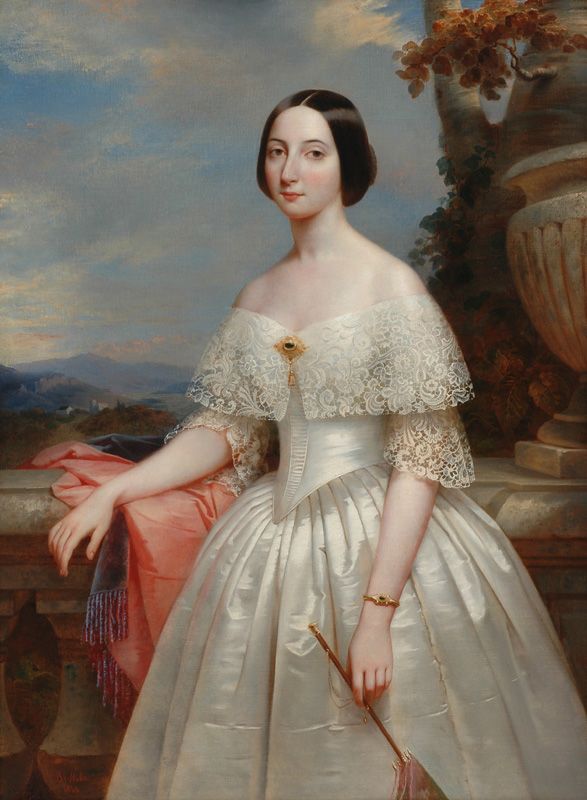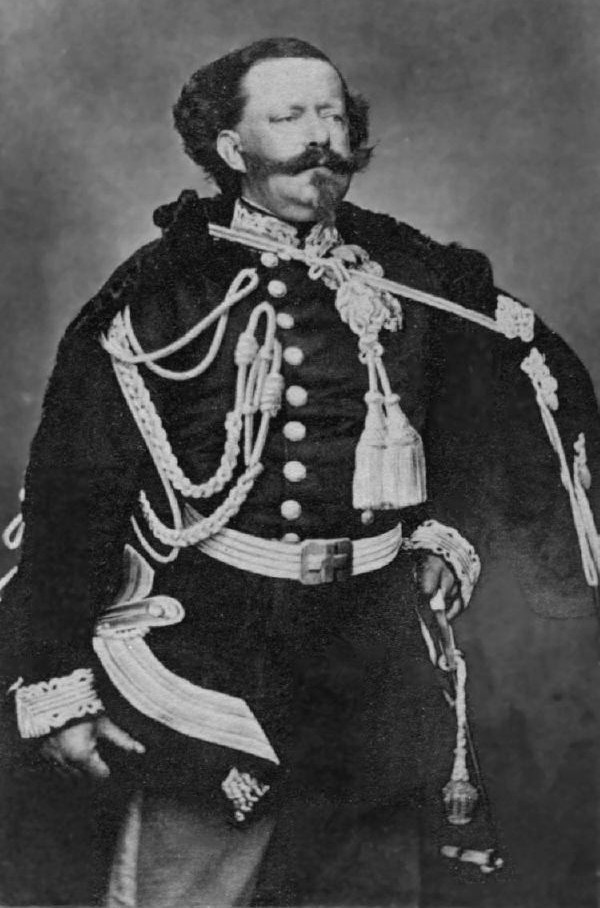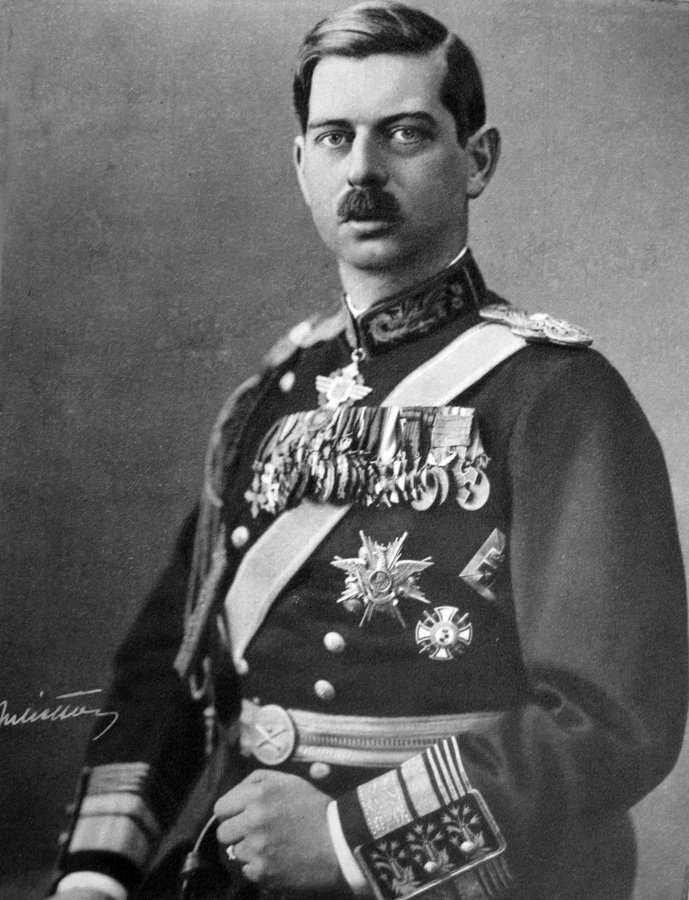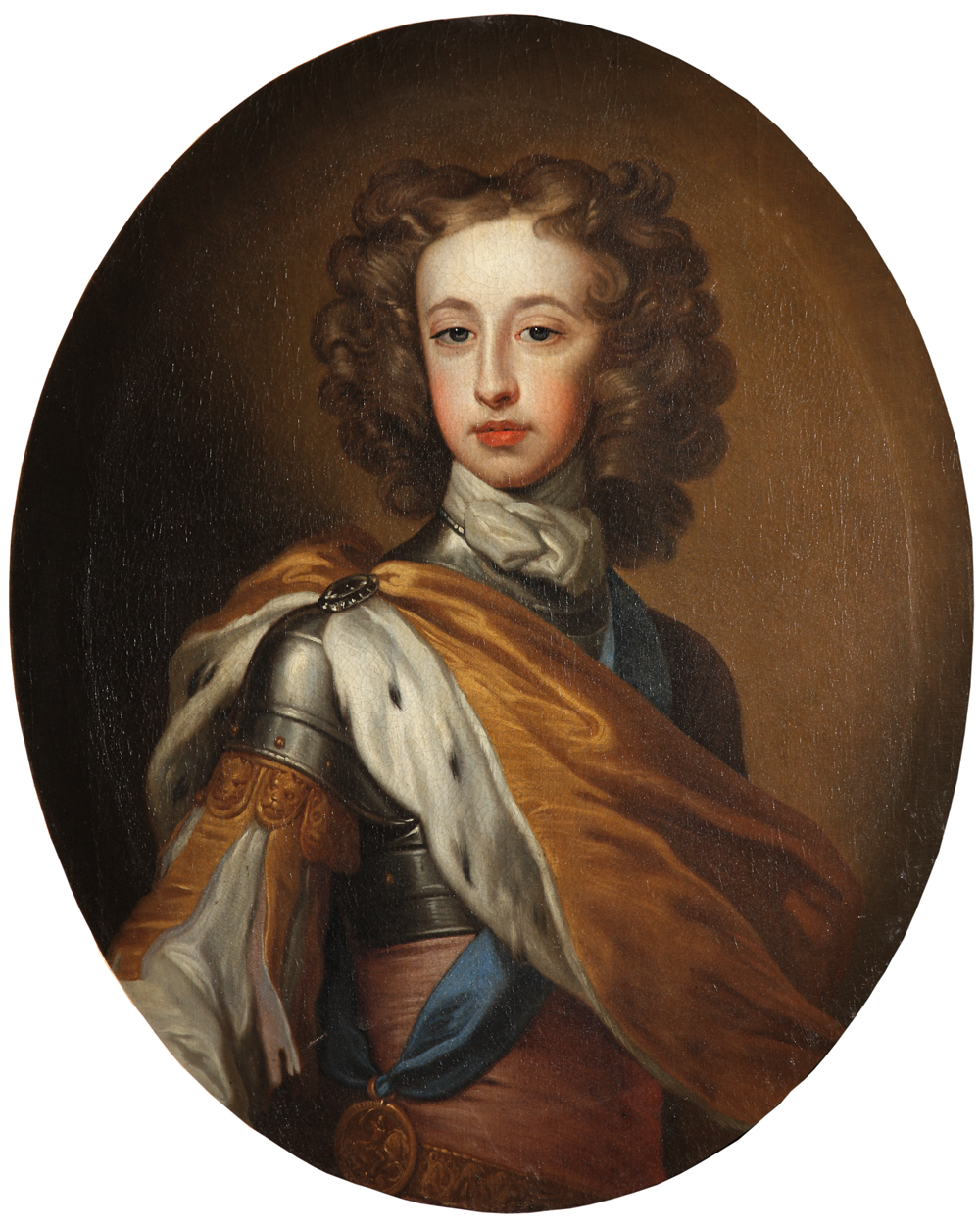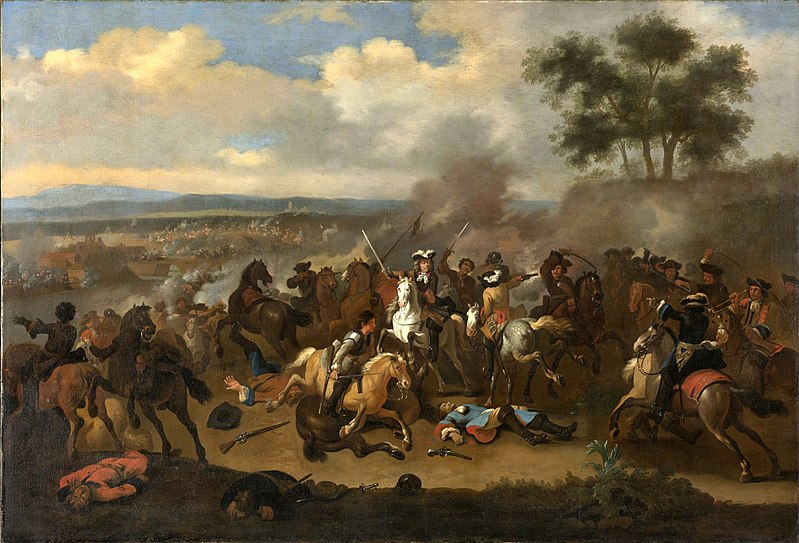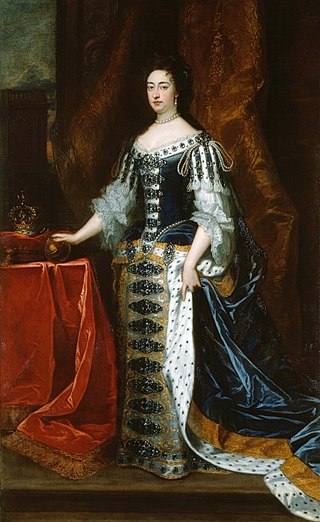by Susan Flantzer © Unofficial Royalty 2016

Queen Mary II of England; Credit – Wikipedia
Her Highness The Lady Mary was the eldest daughter and the second child of James, Duke of York (the future King James II of England) and his first wife, Anne Hyde. Mary was born at St. James’ Palace in London, England, on April 30, 1662. Her elder brother Charles lived for only six months and died before Mary was born. Except for the short time one or more of her three younger brothers were alive, Mary was second in line to the throne after her father, brother of King Charles II.
Mary had seven siblings, of whom only Mary and her sister Anne survived childhood:
- Charles, Duke of Cambridge (1660 – 1661), died of smallpox at seven months
- James, Duke of Cambridge (1663 – 1667), died of the bubonic plague or smallpox at age 3
- Queen Anne of Great Britain (1665 – 1714), married Prince George of Denmark, no surviving issue
- Charles, Duke of Kendal (1666 – 1667), died in infancy
- Edgar, Duke of Cambridge (1667 – 1671), died at age 3
- Henrietta Stuart (born and died 1669), died in infancy
- Catherine Stuart (born and died 1671), died in infancy

The Family of James, Duke of York. The Duke (later King James II and VII) and Duchess of York (previously Anne Hyde). Their two daughters, Mary (left) and Anne (right), later Queen Mary II and Queen Anne, were added in or after 1680. Windsor Castle is in the background; Credit – Wikipedia
Mary was christened in the Church of England on May 9, 1662, at the Chapel Royal in St. James’ Palace. Her godparents were:
Mary’s mother and father converted to Roman Catholicism, but on the orders of King Charles II, Mary and her sister Anne were brought up in the Church of England. Mary’s mother died of breast cancer in 1671 when Mary was 9 years old. At that time, Mary and her younger sister Anne were declared “children of the state” and their education became the responsibility of their uncle, King Charles II. The two sisters were moved away from their father’s Catholic influence and given their own household at Richmond Palace on the River Thames under the care of Sir Edward Villiers and his wife Frances. The Villiers daughters were educated with Mary and Anne, and the girls had lessons in religion, French, drawing, music, and dancing.
In 1673, Mary’s father James made a second marriage with the Catholic 15-year-old Maria Beatrice of Modena. Mary was only four years younger than her stepmother, and James told his daughters that he had provided them with a new playmate.
Mary had seven half-siblings via her father’s second marriage with Maria Beatrice of Modena, but only two survived childhood:
In 1677, when Mary was 15 years old, it became apparent that Catherine of Braganza, the wife of King Charles II, would not provide a Stuart heir. In addition, Maria Beatrice of Modena had two miscarriages and two daughters, one had died in infancy, and one was sickly and not expected to survive. Mary’s marriage became a matter of dynastic importance for the House of Stuart. The bridegroom her uncle chose for her was William III, Prince of Orange, her first cousin. William was the only child of Mary’s paternal aunt Mary, Princess Royal and Willem II, Prince of Orange, who had died of smallpox a few days before his son’s birth. William was fourth in line to the English throne after his uncle James and his cousins Mary and Anne.

William III, Prince of Orange; Credit -Wikipedia
15-year-old Mary and 27-year-old William were married on November 4, 1677, in Mary’s bedchamber at St. James’ Palace with only the closest relatives attending. The bride was miserable, the groom acted with cool correctness, the father of the bride was grimly resigned to the marriage, and the stepmother of the bride, who was very pregnant, was in tears at the prospect of losing her stepdaughter. The bride’s aunt Catherine of Braganza tried to comfort Mary saying, “When I came to England I had not even seen the King,” to which Mary replied, “Madam, you came into England, but I am going out of England.” Mary’s sister Anne and her governess Lady Frances Villiers were unable to attend as they were both ill with smallpox. Only the bride and groom’s uncle, King Charles II, was his usual cheerful and tactless self. Upon closing the curtains around the marital bed, Charles remarked, “Now nephew, to your work! Hey! St. George for England!”

Mary in the year of her marriage; Credit – Wikipedia
William and Mary made a formal entry into The Hague, the seat of William’s Dutch Republic, on December 14, 1677. Mary soon became pregnant but suffered a miscarriage, which may have prevented any future successful pregnancies. It is suspected that she had at least two more miscarriages. Her inability to have children was Mary’s greatest unhappiness. Despite their physical mismatch, Mary was quite tall (5 feet 11 inches/180 cm) and towered over the undersized and asthmatic William (5 feet 6 inches/167 cm), William adored Mary, and Mary was devoted to William. Unlike his uncles, Charles II and James II, who had many mistresses, William reputedly had only one mistress, Elizabeth Hamilton, Countess of Orkney.
In 1685, William and Mary’s uncle, King Charles II, died without any legitimate children despite having at least 14 illegitimate children. Mary’s father, who had converted to Roman Catholicism, succeeded his brother as King James II. Mary and her younger sister Anne were James’ only surviving children and were first and second in the line of succession, followed by William, who was third as the only child of King Charles I’s eldest surviving daughter. King James II was now set on a course of restoring Catholicism to England. He issued a Declaration of Indulgence removing restrictions imposed on those who did not conform to the Church of England. England might have tolerated King James II, knowing that his heirs were the Protestant daughters of his first wife Anne Hyde, Mary and Anne. However, on June 10, 1688, James’ second wife, Maria Beatrice of Modena, who had no surviving children, gave birth to a Catholic son, James Francis Edward. Immediately, false rumors swirled that the infant had been smuggled into the queen’s chambers in a warming pan.
On November 5, 1688, William III, Prince of Orange, the nephew and son-in-law of King James II, landed in England vowing to safeguard the Protestant interest. He marched to London, gathering many supporters. James II panicked and sent his wife and infant son to France. He tried to flee to France about a month later but was captured. William had no desire to make his uncle a martyr, so he allowed him to escape. James was received in France by his first cousin, King Louis XIV, who offered him a palace and a pension.
Back in England, Parliament refused to depose James but declared that, having fled to France, James had effectively abdicated the throne and the throne had become vacant. James’s elder daughter Mary was declared Queen Mary II, and she was to rule jointly with her husband William, who would be King William III. This overthrow of King James II is known as the Glorious Revolution. James was determined to regain the throne and landed in Ireland with a French force in 1689. He was defeated by his nephew William at the Battle of the Boyne on July 1, 1690, and was forced to withdraw again to France, where he lived in exile for the rest of his life.
William and Mary were crowned at Westminster Abbey in London, England, on April 11, 1689. Since they were joint sovereigns, a duplicate coronation chair and a duplicate set of regalia were required for the coronation ceremony. At previous coronations, monarchs had sworn to uphold the laws made by their ancestors. However, William and Mary swore to rule according to “the statutes in Parliament agreed upon and laws and customs of the same” and promised to uphold the Protestant reformed religion.
On December 16, 1689, Parliament passed the Bill of Rights 1689, which limited the monarch’s powers and set out the rights of Parliament. The Bill of Rights 1689, along with the Act of Settlement 1701, are still in effect in the United Kingdom and Commonwealth realms, although both have been amended by the Perth Agreement 2011, which took effect on March 26, 2015. The Bill of Rights also confirmed the succession to the throne. Following the death of either William or Mary, the other was to continue to reign. Next in the line of succession would be any children of the couple, followed by Mary’s sister Anne and her children. Last in the line of succession stood any children William III might have had from any subsequent marriage. Beginning in 1690, William was often on military campaigns in Europe and left Mary to reign. She was not keen on assuming such power but did so with the advice of a nine-member Cabinet Council.
William and Mary left a legacy in the United States. In 1693, William and Mary granted a royal charter to found the College of William and Mary, now in present-day Williamsburg, Virginia. It is the second oldest university in the United States after Harvard University and the only university in the United States with a royal charter. The College of William and Mary educated American Presidents Thomas Jefferson, James Monroe, and John Tyler, and other key figures important to the development of the United States as a nation, including Supreme Court Chief Justice John Marshall, Speaker of the House of Representatives Henry Clay, sixteen members of the Continental Congress, and four signers of the Declaration of Independence. Another alumnus of The College of William and Mary is this writer’s son.

William and Mary depicted on the ceiling of the Painted Hall, Greenwich; Credit – Wikipedia
In early December 1694, Mary became ill. Smallpox was spreading through London, and it was feared that Mary might have contracted the disease, a disease that had previously killed both of William’s parents. Mary was in a weakened state, having been upset about William’s latest illness and the sudden death of John Tillotson, Archbishop of Canterbury. One morning when Mary awoke, she felt particularly ill and noticed a rash on her arms. Eventually, the doctors confirmed that Mary was suffering from smallpox, which she accepted with an attitude that surprised all around her. The first thing Mary did was to send away everyone who had not had smallpox. William, who had survived the disease, had a bed put in Mary’s room and oversaw her medical care.
Prayers were said for Mary in all the churches on Christmas Day 1694. Mary said that she had slept well and felt better. The rashes seemed to have disappeared, and the doctors thought that perhaps it had been measles. However, when Mary was examined in the evening, the nine doctors attending her discovered that the rashes had turned inward and sunk into her skin, which was not a good sign. Mary had an uncomfortable night, and her throat was hemorrhaging. The desperate doctors tried all sorts of remedies: bleeding Mary, applying hot irons to her forehead, and giving her various potions. Mary was told that she was dying. The usual unemotional William broke down and burst into tears. Mary begged him to control himself and not to make her suffer by seeing him so upset. She told him that she was “not so bad” to which William replied, “that if God caused this blow to fall, it would be all over for me.”
Dr. John Radcliffe, the renowned doctor, examined Mary on December 27. He confirmed that Mary’s condition was hopeless. Mary received Communion and tried to pray, but she was too weak, and in a whisper, asked others to pray for her. In the evening, Mary was much weaker. She tried to talk to William, but the effort was too much for her. William approached her in tears, and Mary motioned him away. Soon she lapsed into unconsciousness. In the early morning of December 28, 1694, Mary peacefully died. She was just 32 years old. William was terribly grief-stricken, collapsed at Mary’s bedside, and had to be carried, nearly insensible, from the room. For a few days, it was feared that William, too, would die.

Queen Mary II lying in state © Victoria and Albert Museum, London
Mary lay in state in the Banqueting Hall of Whitehall Palace. Despite the cold weather, large crowds lined up to file past their Queen and pay their respects. On March 5, 1695, in a heavy snowstorm, the funeral procession traveled the short distance from Whitehall Palace to Westminster Abbey. The King was not present, according to custom, but all members of both Houses of Parliament, all wearing black, attended the funeral. The noted English composer Henry Purcell specially composed Music for the Funeral of Queen Mary.
Queen Mary II was buried in a vault under the monument to George Monck, Duke of Albemarle, in the Henry VII Chapel of Westminster Abbey. Charles II, Mary’s husband William III, Mary’s sister Anne, and her husband George of Denmark were also buried in this vault. A joint monument for William III and Mary II was designed but never constructed. An inscription on the floor marks her grave. William reigned alone until he died in 1702, when he was succeeded by Mary’s sister Anne.

Inscription on the floor of the Henry VII Chapel at Westminster Abbey marking the grave of Mary II; Credit – findagrave.com

Stuart Royal Vault at Westminster Abbey; Credit – www.westminster-abbey.org
This article is the intellectual property of Unofficial Royalty and is NOT TO BE COPIED, EDITED, OR POSTED IN ANY FORM ON ANOTHER WEBSITE under any circumstances. It is permissible to use a link that directs to Unofficial Royalty.
Recommended Book: William and Mary by John Van der Kiste, 2003
Recommended Book: Ungrateful Daughters: The Stuart Princesses Who Stole Their Father’s Throne by Maureen Waller, 2002
House of Stuart Resources at Unofficial Royalty
